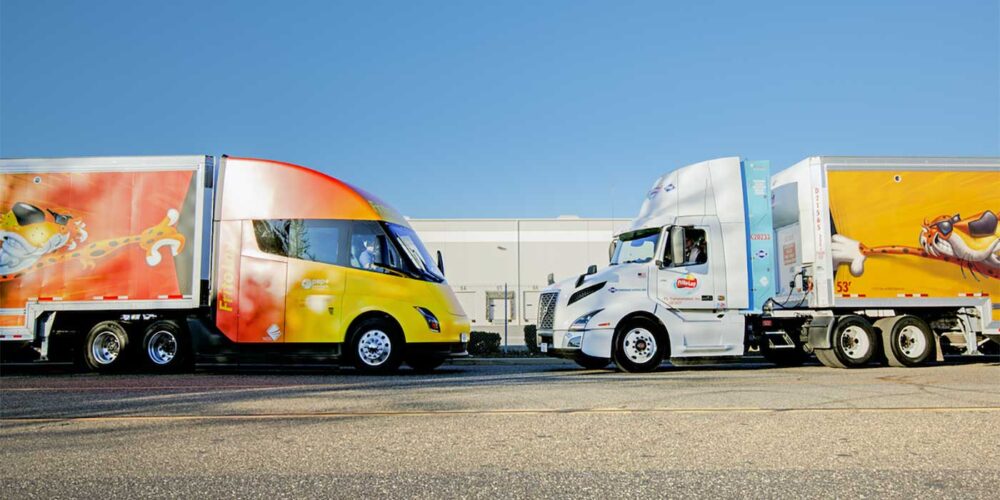Selecting the best truck tires, or more specifically,matching tires to expected service conditions, has traditionally beenaccomplished by following a few simple guidelines. The three main servicecategories suggested by nearly all tire manufacturers have been:
1. high speedline haul,
2. metro (P&D), 3. mixed on-off road service.
Among the primarydistinctions are tread rubber compounds that emphasize long treadwear/resistance to irregular wear, scuff wear resistance in highfrequency/severity turn service, and chip/chunk/stone drilling resistance respectively for these threecategories. A number of technology advances in the commercial tire industry,along with changes in the operational organization of modern trucking routingswill likely make tire choices more complex and financially important in thenear future.
New generations of improved (lower) rolling resistance tiresare now widely available. Advances in polymer science, rubber compoundadditives, and processing/mixing technology are the basic building blocks ofthese more energy efficient designs. Of course, new technology often comes witha price tag, but since tire rolling resistance represents a significant portionof the total truck fuel economy equation, especially at steady-state slow tomoderate speeds, the payback can be short in many service conditions. Considerthat the length of truckload hauls has continued to shorten over the pastseveral years and that the traditional distinction between “long haul” and“regional” has become blurred.
Quantifying the influence that low rolling resistance tirescan have on overall fuel economy will depend on accurately describing serviceconditions such as speeds, acceleration/
braking cycles, equipment configurations, loads, routecongestion, driver training, total miles traveled, and other variables. Thissounds daunting, but knowledgeable vehicle and tire engineers can provideuseful tire selection advice, as long as operators can input accurate detailsof these conditions. New fuel efficient tires may be cost effective for some,but not for others. Remember that proper inflation maintenance helps all tiresmaintain low rolling resistance. New lower rolling resistance treads arebecoming available for retreads, but driver training, or lack of it, can stilltrump the effects of many fuel efficient components, including tires.
Another trend is the evolution of a new (fourth) serviceclassification, a combination local delivery and regional high speed service.Tim Miller of Goodyear’s commercial tire division believes this is a rapidlygrowing application that will continue to expand. The idea is to maximize highspeed treadlife, resisting the onset of irregular wear, while still providinghigh scuff wear resistance in frequent and severe wheel cut angles typical ofcity delivery operation, all with better fuel economy than has been typical ofolder metro service tires. Deep treads, solid shoulder ribs, buttressedsidewalls and complex tread components having two or three different compoundsare typical features of these new generation hybrid tires. Properly matched toservice conditions, these tires may offer longer wear, better casing durabilityand reduced casing injury rates, and even better fuel economy, resulting inlower operating costs.
Another recent development is self-sealing tires that canmaintain inflation integrity and therefore remain in service with punctures upto approximately 1/4- in. in diameter. This is achieved by including a gel-likesealant in the tire casing interior at the time of new tire manufacture. Fewerroadside flats and more casings preserved for retreading are major costadvantages. This is especially applicable for mixed on-off road services suchas wastehaul, and for trailer tires that typically receive less inflationmaintenance and fewer visual damage inspections than steer or drive axle tires.Cost benefit analyses for these tires will vary for long haul versus domiciledfleets, availability of service providers en route, financial and goodwilleffects of delayed deliveries, and normal tire inspection frequencies.
Whether or not any of these niche targeted tire canhelp reduce operating costs and headaches will require detailed cost-benefitanalysis. Because of the variables involved, especially in the case of fueleconomy and casing conservation, considerable experience and tire industry technicalassistance is desirable. Simple decisions may not always be in your bestinterest.













